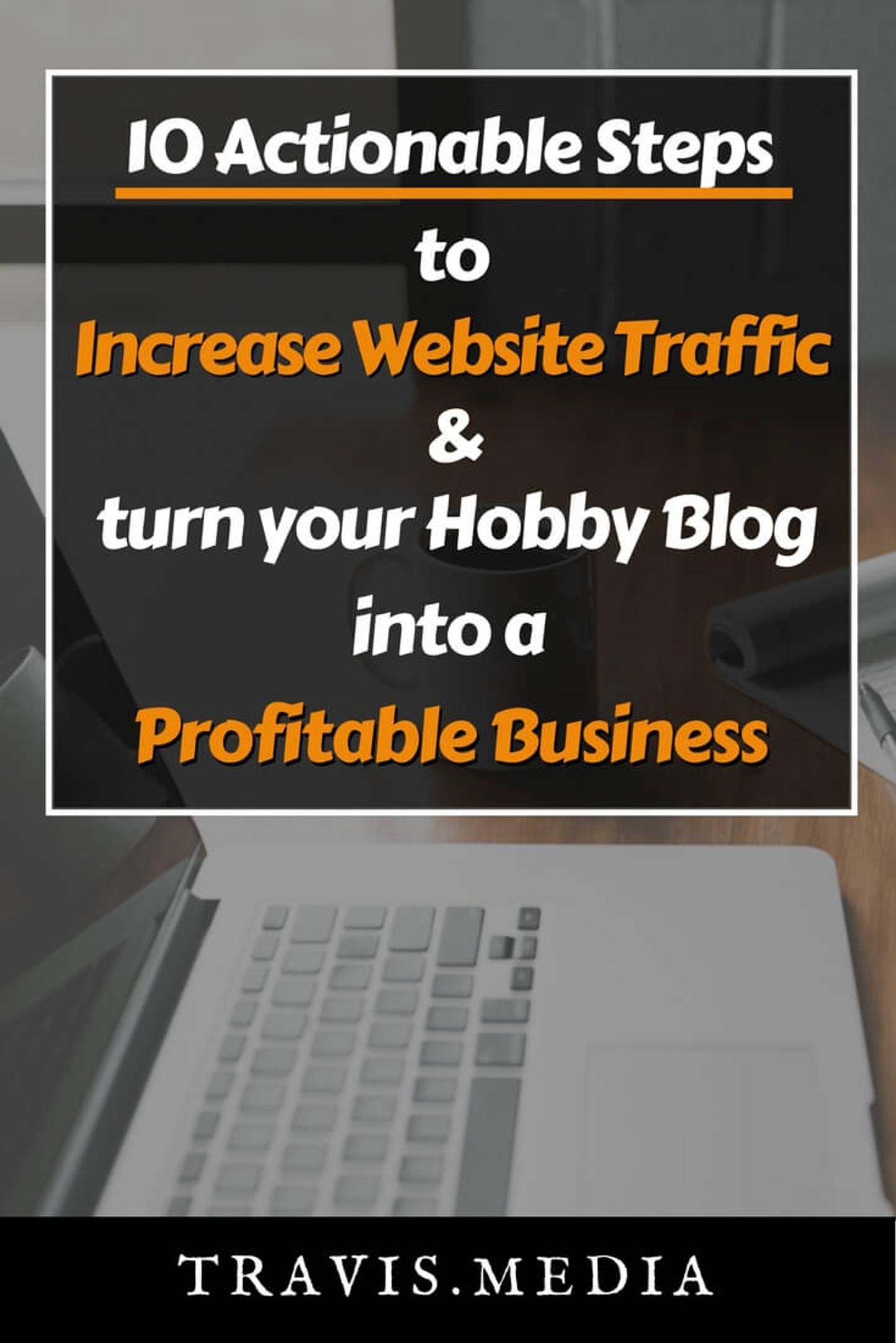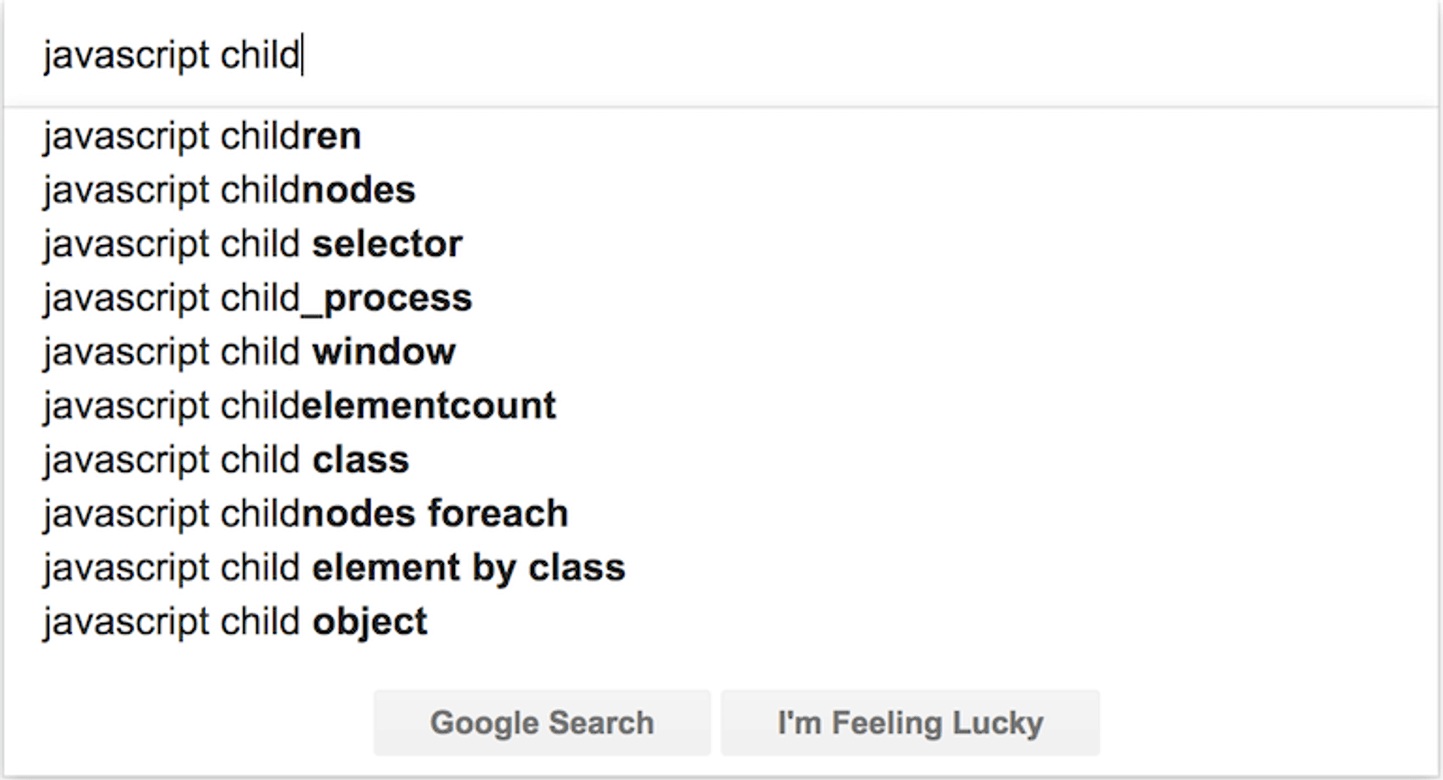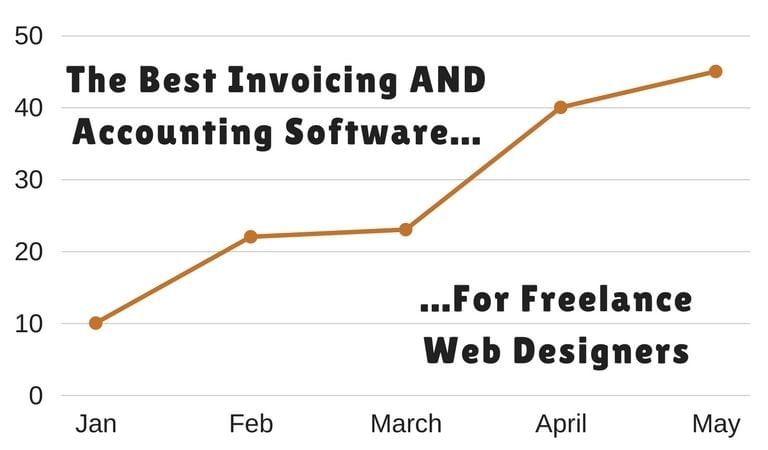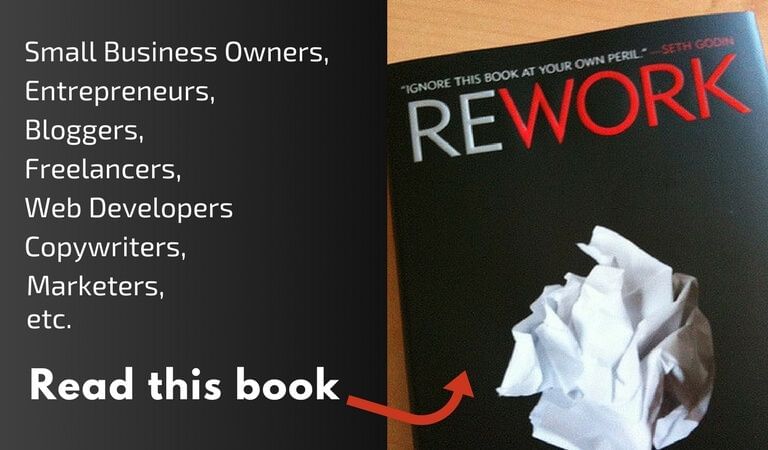10 Actionable Steps To Increase Website Traffic And Turn Your Hobby Blog Into A Profitable Business
Since the beginning of of this year I have been able to increase website traffic by 500%. This comes as a result of taking what had been largely a hobby blog, and transforming it into a purposeful, yet passionate, business. In this post, I want to show you how to do this for your own blog by providing 10 actionable steps to help you take your blog from "hobby" to profitable business.
Let's get right to it:

1. Mindset
In order to shift your blog from hobby to business, you have to come to accept and embrace this one foundational truth:
Your blog does not exist to serve you, but to serve your readers.
It took me a long to time to get this. I wanted to write about my journey, my life, my opinion on matters, and somehow I thought that people would find it interesting and want to follow me.
Well they didn't.
And why would they want to? Am I a celebrity? Do they not also take photos of their own day, learn new things, have opinions, struggles?
What difference is it for me to write about my life than for them to write about theirs?
To be clear about it, all blog readers (including myself) want to know what's in it for them. And they should.
Why should I be a regular visitor to your site? How can I benefit from you? What are you offering that will help me better my business, my life, or reach my goals?
This is what people are looking for and if you want to increase website traffic, start writing for your audience, not for yourself.
Actionable Step 1:
Take a minute to think:
Is my blog adding value to my readers?
What reason do they have for coming back on a regular basis to read my content? Always remember that your blog exists first and foremost to serve your reader, not yourself.
2. Clarity
And who is your reader?
Who is the ideal person you are writing for? Who will most benefit from your experience? What topic or profession are you writing about? Will your reader relate to your blog post today, but find the next three distant and irrelevant?
With a personal, hobby blog you can write about anything. You visited New York one day, you got a new pet the next, you are learning to code in six months, and you think Donald Trump is an idiot.
Let me ask you this:
Will your reader like all four of these stories?
No. Of course not.
So how can you hope to retain readers if they can only relate to and benefit from select posts?
Instead, you have to determine your business niche and write around it. If your niche is web design, you need to create valuable content that web designers will benefit from and keep coming back to glean from.
This is clarity. Figure this out soon in the life of your blog and you will increase website traffic much, much faster.
Actionable Step 2:
Who is your ideal reader?….your target audience? Will your reader be able to relate to all of your content in some way or another? Be sure that you are writing around your niche/business in order to retain the interest of your targeted readers.
3. Consistency
This is a point EVERY successful blogger mentions and for a good reason as it is the absolute life or death of your blog.
And, you know this from experience:
How many times have you found an amazing blog filled with all kids of content that you have been looking for, and after spending some time musing around, you check the latest posts and and see that they haven't posted anything in 9 months!!
What a letdown!
And IF for some reason you do not immediately move on from there and determine that it is still a valuable blog, you will eventually run out of things to read and then leave to never return.
In order to transform your hobby blog into a profitable business, you have to actually treat your blogging as part of your business.
You must have blog writing scheduled into your calendar. You must be a consistent content creator.
People often debate how often one should blog, but it is truly a secondary question. What is primary is that you are actually creating content on a regular, long-term basis.
A good rule of thumb is to start with one post a week. Anyone can manage that if they put it on their schedule. If for some reason you want to move to two or three, be very careful that you are able to meet this goal on a consistent basis. If not, just keep it once a week and guard that timeslot. Do what it takes to assure one post a week.
Actionable Step 3:
Blog at least once a week and do not miss even one! Put it in your schedule. Create a set time to do it. DO NOT consider two or three times a week until you can easily meet the 'once a week' post.
4. Site Structure
This will be a brief point but an important one.
Put yourself in the reader's shoes and ask yourself a few questions:
- Will they find your site easy to navigate and find what they are looking for?
- Are your posts open enough for the content to stand out or is it tightly surrounded by ads and banners?
- Will they be able to differentiate your headers from your paragraph text?
- Have you made it easy for them to share your post?
- Have you provided some related links at the end of the post to keep them from bouncing from your site after one article?
- How is your font size? Your line height? Your paragraph size? These may sound petty, but they are far from it.
You see, you want to structure your website so that it is pleasing and enjoyable for the reader. One drastic change that I made recently was to remove the sidebar. My hope is that the reader will not be distracted with side ads and featured posts, etc., but will instead actually read the post from top to bottom with no interruption on my behalf. There have been a number of studies about this recently and it is rather shocking at the number of sites that have seen dramatic results by removing the clutter around the post content (the sidebar). Now I am not taking a side with either here (it is a very controversial topic), but simply want to make a point: Sometimes leaning more towards simplicity can yield better results. Again, put yourself in your reader's shoes and critique the "enjoyability" of your site. Then make the appropriate changes.
Actionable Step 4:
Take some time to critique your site, your font size, line height, navigation, your "blog content clutter," the visibility of important buttons such as social sharing and related posts. Create a list of possible changes and play around with it. Aim to make your site "pleasureable!"
5. Keywords
With my hobby blogging, I always tried to come up with witty post titles.
This is fine if you already have a lot of readers. But if not, how in the world do you expect to show up in Google search? How do you expect people to find your post?
For example: Let's say I wrote a post on how to navigate the DOM with JavaScript parent and child properties, and I named it something witty like "The JavaScript Family."
If I had lots of readers already, they may find that funny. But when would ANYONE ever search for this in Google? The people looking for an explanation of parent and child properties are not going to do a google search for "javascript family."
Thus your post will NEVER be read and visitors will not be coming to your site.
Instead, you need to do a little Keyword Research. A little keyword research is 100x better than a witty title.
And it can be as simple as this:
Go to Google search and begin typing about your main blog topic. Google will start showing you relevant search suggestions. For example, if I was writing the post about JavaScript parent and child properties, and I go to Google and type in "javascript child" I would see this:

This is where you should start. Choose a keyword from this list and build your post title around it!!
Also, get specific about your keywords. For example, if you were to write a tutorial on how to check your website speed and used the keyword "website speed" you would probably not get much traffic at all. Why? Because it is such a vague and broad keyword.
Instead, consider a more specific phrase people will search for. This will help you stand out.
So instead of "website speed" you could use "website speed on google page insights."
You will immediately differentiate your post from among thousands of others out there.
This is called a long-tail keyword and there is a lot of great information out there about these.
Combine long-tail keywords with the Google suggestions and you will be better equipped to increase website traffic.
*There are other great paid options out there for keyword research, but start here with Keyword Planner. If you are looking to advance to something more powerful, then look no further than Long Tail Pro to meet all your needs. Give it free test run to see if its for you.
Actionable Step 5:
Make sure for every post you create, that you are reshaping your title around a profitable and practical keyword. You can still be creative about it, but be certain it includes a keyword that you have determined will rank.
6. Post Structure
The next actionable step to increase website traffic by transforming your hobby site into a profitable business blog, is to adapt some sort of uniform, proven, posting structure that will serve as a framework for all of your blog posts.
This will not only increase the chances of success for your posts but it will save you time by giving you checkpoints to look to as you write.
What are the elements that you find to be essential in your posts? What elements are great bloggers out there including in their posts that bring them success? Do a little research and tweak this to come up with your own structure, based on the blogging successes of others.
For example: Here are some universal elements that I find every blog post should have:
- A Gripping Title: We talked about the importance of a title with a solid keyword in it above, but the title should also be enticing, compelling people to read it. For many, including myself, this is often the sole factor as to whether they will read your post or not.
- A Leading Promise: If the title does its job, many readers will then scan the first paragraph of your post and this will be the next deciding factor as to whether they will invest their time in reading it or not. Thus, your opening paragraph should present a quick, captivating summary as to how you reader will benefit from your post.
- An Image: A relevant image can help your readers relate personally to the post. In addition, it helps break the monotony of the text and gives life to your work. You can find free images at Unsplash, free or $1 images at Canva, or pay for professional images at iStockPhoto.
- A Personal Experience: I love to read personal experiences. It reminds me that we are all human and can relate to one another no matter what walk of life we are in. It is also a great way to bring clarity to a muddy argument.
- The Main Content: Well, of course!
- Call To Action: When your post ends, what action will you call your reader to? Perhaps you have a course or ebook that will help them on the topic further. Perhaps you have a stimulating question to encourage discussion in the comments.
Actionable Step 6:
Create a blog post structure that is effective AND works well for your readers. Having a pre-determined structure will not only give your readers a consistent idea of what to expect but will help you create content more efficiently.
7. Sharing
This is a feature that I did not take serious for a long time: Social Sharing icons for my posts.
I defaulted to the view that it was something every blogger should do and that all the plugins basically did the same thing. Also, if someone wants to share my post they will do it regardless of where or how I decide to place these icons.
But in an age where social media is indeed a way of life, you cannot just assume anything.
Some social sharing plugins are very basic, some offer analytics, some are bloated with unnecessary options, and others are limited in features.
So how do you chose the right one?
Here were a few things I looked for in a plugin:
- A plugin that was lightweight and built with speed in mind.
- A plugin with analytics, tracking shares with Google Analytics.
- A plugin allowing for varying button and placement options.
- Finally, a plugin allowing for proper Pinterest sharing. Pinterest is a HUGE search engine these days.
So what is the point of me telling you this and including it in the list?
Because I had a strategy. I had to assume that most are not going to take the time to hunt down my social icons to share. I wanted the ability to style them, position them, configure them, and track them. You need to do the same.
For this purpose I chose the awesome Social Warfare plugin for just $29/year.
Do you see my icons sitting there to the left? They stay there on scroll. They show the count for each. The share with the proper open graph/cards/rich pins information. My images can be pinned. They do not slow down my page load at all etc., etc.
Actionable Step 7:
Create a proactive social sharing option and optimize it in such a way that your reader will share your post. If you are not sure, consider Social Warfare. It's top of the line.
8. Social Media Strategy
Now this seems similar to the above number, but it is very different and VERY important.
Hobby bloggers have no real social media strategy. They post their opinions, life updates, etc., as if social media itself is the goal.
But if you want to take your blog from hobby to a profitable business, you need to change your social media strategy. There is a reason why Digital Marketers are in such demand today, because businesses need social strategies, and they need it on a full-time basis.
You must remember that the purpose of social media is to 1. Point people back to your blog, and 2. To establish yourself as the "go to person" in your niche for good, relevant content.
Here were the steps I implemented on my blog to increase website traffic:
First, I chose what would be my main platform: Twitter. Since this is my main platform, it is on here that I post blog updates, quote graphics, link to other relevant and valuable articles in my niche, and I engage with other people in my field. Much of my attention is focused here.
Second, I decided to utilize as many other social media platforms as I could, and I realized that I had to deal with each one individually as they are purposed. (And remember not to leave out Pinterest as it is, itself, a search engine and can be a huge source of traffic for your blog. If you are interested in how handle each one optimally, check out some of Gary Vaynerchuk's books like Crushing It or Jab, Jab, Jab, Right Hook).
Again, the social media goal is to point people back to your website.
But with all of these platforms, how in the world do you or I keep up with all of it??? Do we need to hire someone full time our marketing? It seems like a lot of work.
Yes it is, but there are two things that will help you suceed with this:
- Schedule a time to set up the bulk of your social media for each week. I will soon be writing a post on how I do this, but for now let me say that this has to be scheduled in and there must be some sort of automated tool like the following.
- Use an All-In-One Social Media Management Tool for all social media platforms but your main one. With these, you can setup categories by which you sort content and then schedule daily/weekly/monthly/ what types of content you will post, when you will post it, and whether this category will include one-time posts or evergreen content.
There are a number of all-in-one-social media management tools out there such as Meet Edgar and Buffer, but I have recently come across a wonderful application called Social Bee. Social Bee allows me to add content to categories, schedule these categories for weeks and weeks in advance, and run analytics for how my engagement is doing. (Here is my review/overview of Social Bee)
Now where other social media management applications are around $49/month, including Social Bee, there is a special going on at AppSumo for Social Bee where you can get a Lifetime License for a one time fee of $49!!!!
It is my recommendation and what I am currently using. Go get it before the deal is gone.
There is one exception though: Social Bee does not support Pinterest yet, and Instagram will be implemented in the next couple of months.
So in the meantime I use a powerful app called Tailwind for Pinterest and Instagram. Go and try it out for free!
If you are not an avid social media user yet, then the free version of Buffer is an excellent option and one I used for a long time.
Actionable Step 8:
Create a Social Media strategy. Remember, as you grow your networks the ultimate goal is to point everyone back to your blog. Engage more social media platforms by utilizing social media automation tools like Social Bee and Tailwind to automate your content.
9. Affiliate Marketing
One of the first things people want to do when they look to monetize their blogs is to setup Google Adsense.
This is nice, but unless you have tons of traffic, it generates next to nothing. And, it can make your website look so cluttered and "spammy."
And, the ROI is crummy.
Let me suggest to you a better and more profitable approach as you look to increase website traffic: Affiliate marketing.
Here is the bottom line with affiliate marketing:
In running your business, you have a toolbox of tools that help with productivity, focus, efficiency, growth, etc. With affiliate marketing you are recommending these tools to others and if others choose to use them too, you get a percentage of the payout.
This does not mean you have to write reviews day in and day out. Instead you include affiliate links to these tools in your day to day posts and articles.
These can be specific affiliates or affiliate groups that many companies.
But this is a great way to bring profit to your blog. You are giving recommendations as to resources YOU have found beneficial, and others are benefitting by having someone validate whether they should use a resource or not.
Its a win/win all around.
Actionable Step 9:
Once you begin to increase website traffic, utilize Affiliate Marketing to increase profits. Just be sure it is for products or companies that align with your goals, your business, and your conscience. Start with Shareasale or Amazon Affiliates. What apps, items, books, etc. do you use in your day to day activities that you want to "validate" for others?
10. Email Marketing
Finally, as you start to increase website traffic, you can being to really profit from your blog via email marketing.
Email marketing is simply marketing directly to peoples' inboxes.
To get these email addresses you normally create some sort of cheatsheet, e-book, or free course that you offer for free in exchange for their email address.
For the longest time I was not sure why this list was so valuable. What do I do now that I have these personal emails?
And after a bit of reading one day it finally clicked. Let me give you three reasons why this should be a top goal for anyone looking to transform their blog into a profitable business:
- These are your loyal, targeted readers. These folks exchanged their personal email addresses for the gift you offered, and if the gift you offered was within your niche, then these are indeed part of your target audience.
- Thus you can bring value AND market directly to these individuals. For example: If you released an ebook within your niche and posted in on your site and on social media, you are at the whim of the algorithm of the social platform deciding who sees it. You are also just putting it out there in hopes that lots of people will see it and want to buy it. But with a targeted email list you already have a group of people who are interested in your content. You can send them an email directly about your new ebook and will have a much more concentrated interest of people willing to purchase it.
- This group will provide you with tons of third-party info about your site. You can poll them, ask them what they like and don't like, ask for suggestions, etc. You can also answer their questions in the form of blog posts, giving you another outlet of blog posting ideas.
Actionable Step 10:
Are you collecting email addresses? If not, create some sort of content, package it, and offer it in exchange for emails. Then send a weekly email with some sort of personal, valuable information. Once you have a product to offer, or a nice affiliate recommendation, slip these in for their benefit and for yours. Opt in forms can be created for free with the great tools at Sumo. I personally use and love Convert Pro for this.
Conclusion
By putting these 10 actionable steps in motion, I have been able to increase website traffic and turn my hobby blog into a profitable business.
I guarantee that you can do the same!
If you are in a position where you traffic is stagnant or you want to get more "serious" about your blogging, give these 10 steps a shot.
And then let me know how they are faring for you.
Do you have anything to add to this?
Let me know below!
This page may contain affiliate links. Please see my affiliate disclaimer for more info.



